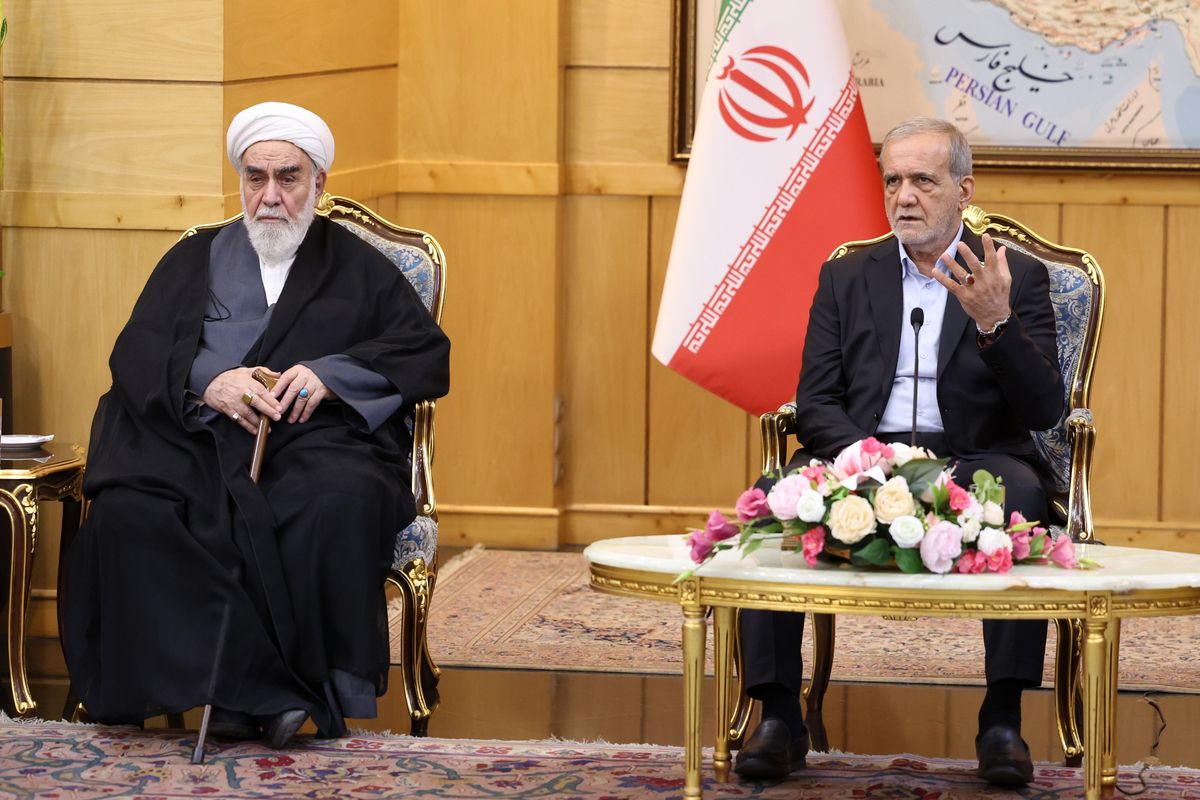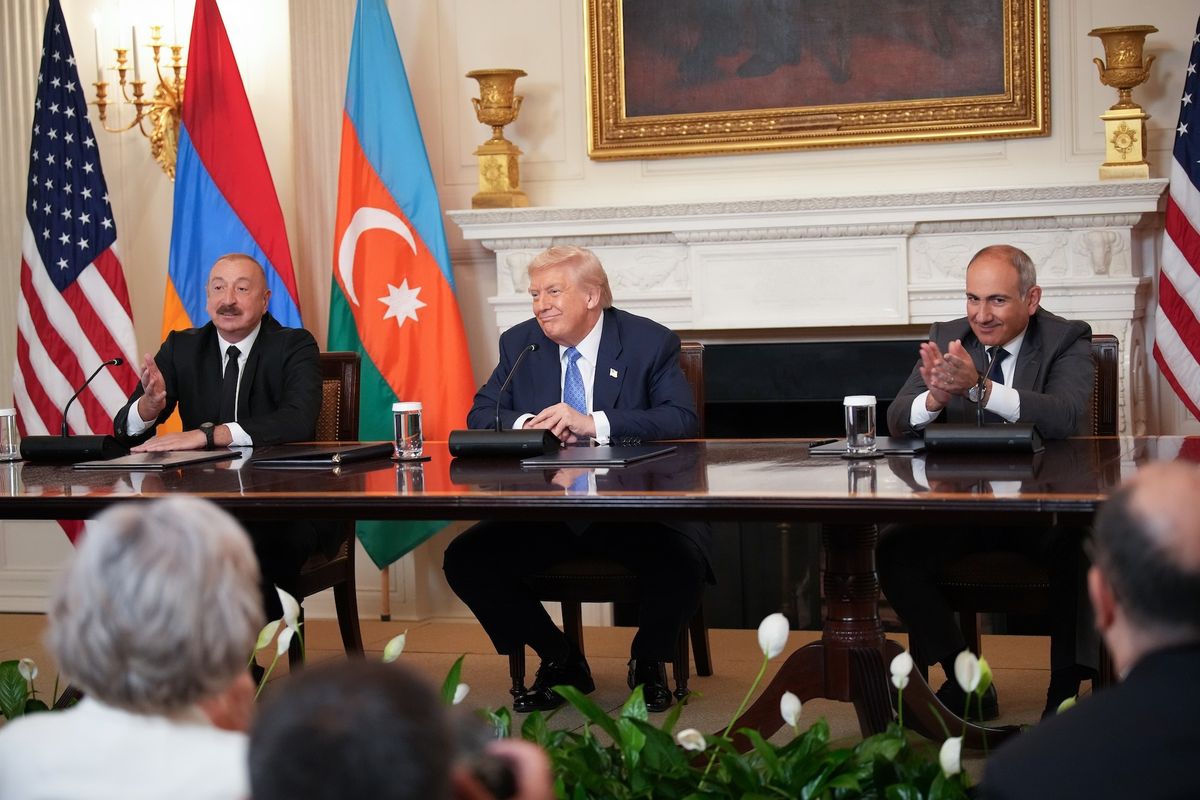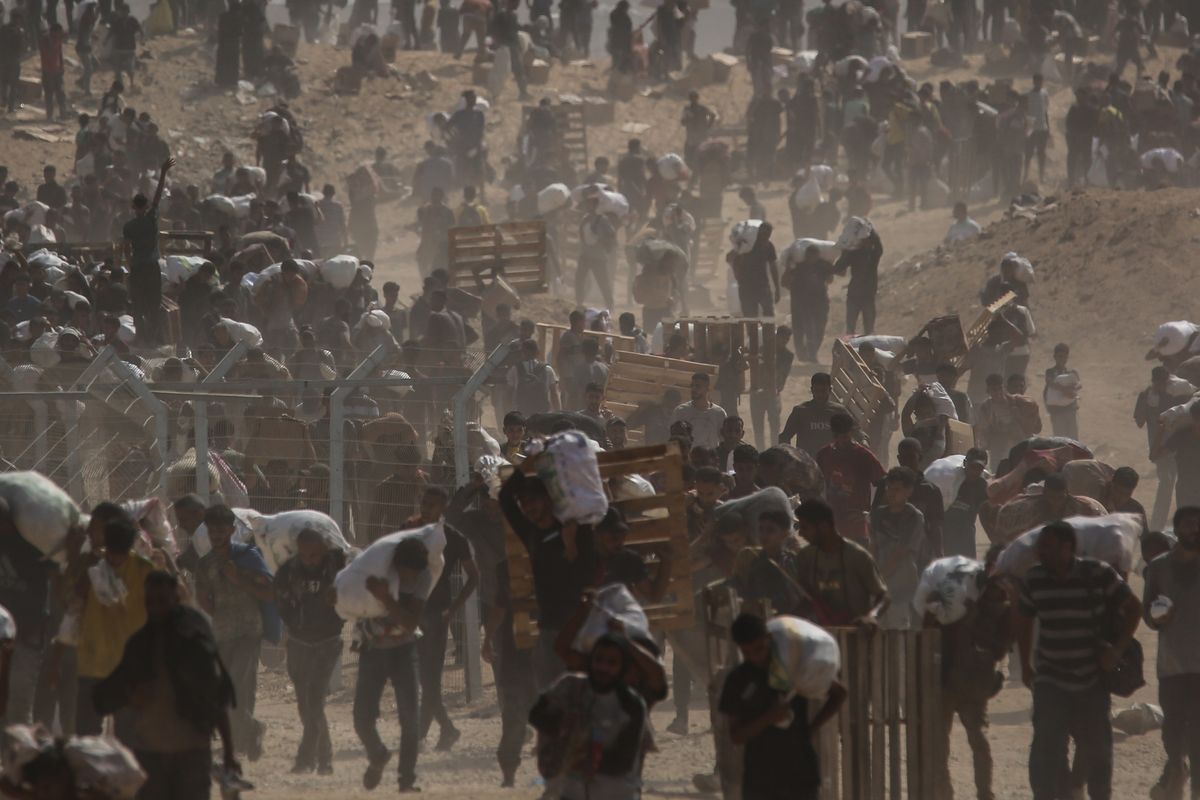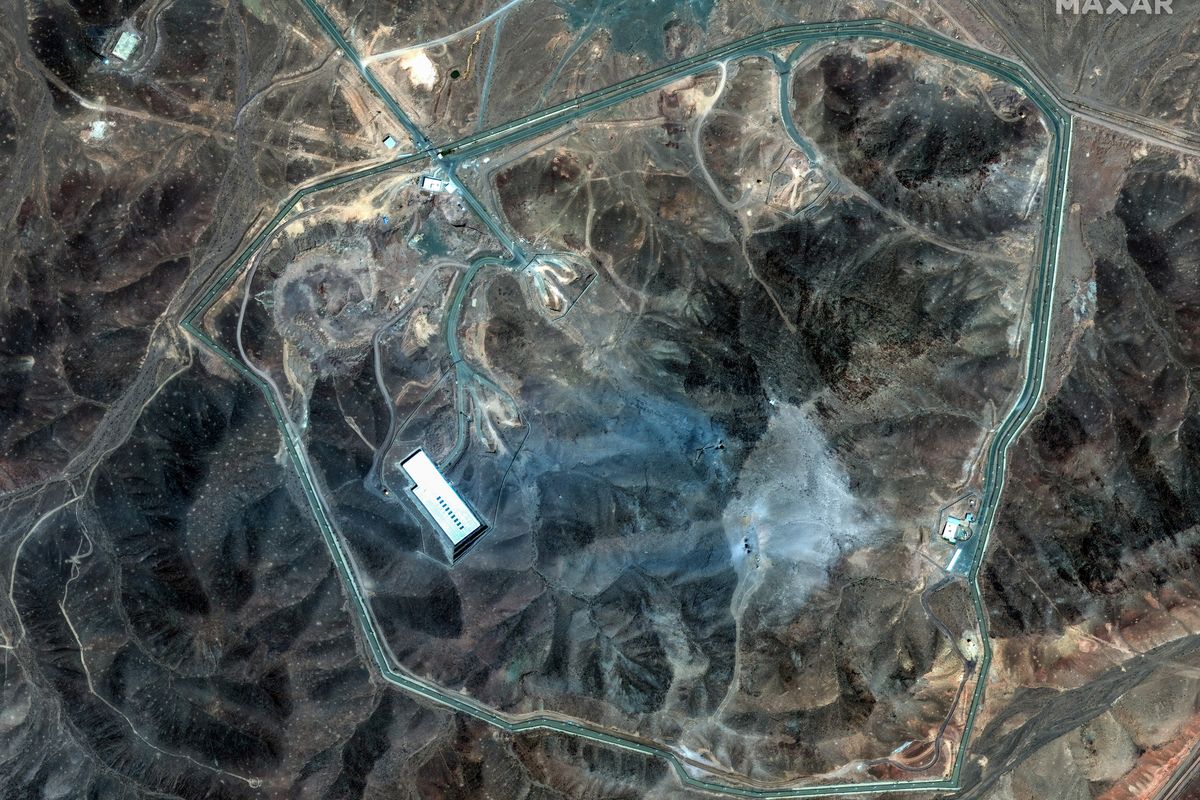"No man ever steps in the same river twice, for it is not the same river and he is not the same man." It was true for Heraclitus of Ephesus in ancient times, and it is equally true for Iranian leaders nowadays. When Tehran considers its strategy vis-à-vis the nuclear deal, its ideas are shaped by the past mistakes of its top leaders – all were key players in designing Iran's failed diplomatic strategy in the mid-2000's.
Supreme Leader Ali Khamenei, President Hassan Rouhani, Foreign Minister Javad Zarif, and Atomic Energy Organization (AEOI) Chief Ali Akbar Salehi were all there when Iran decided to withdraw from its nuclear agreements in 2005 and restart its nuclear activities. Khamenei was Iran's ultimate decision maker, Rouhani was its chief negotiator, and Zarif and Salehi were the ambassadors to the UN and IAEA respectively. A decade later, the same people face a similar dilemma: Should they comply with the nuclear deal if the United States increases pressure on Iran, or should they withdraw from the agreement and face the consequences? No matter which strategy the Iranian leadership chooses, it will surely be devised in light of Iran's lessons from the past.
The Paris Accords: A Brief Reminder
After Iran had been caught building a clandestine enrichment site in Natanz and a heavy water production plant in Arak, it was forced to enter negotiations with the international community, led by the United Kingdom, France, and Germany (the EU3), on its nuclear program.
The Europeans – backed by the United States – insisted that Iran suspend all fuel-cycle activities (most notably enrichment activities), while Tehran pushed back and tried to buy time by engaging in bazaar-style negotiating tactics while concealing evidence of the military aspects of its nuclear program.
Although negotiations were difficult, Iran and the EU3 reached some interim agreements aimed at increasing confidence between the sides and preventing the situation from deteriorating further, with Iran "voluntarily" suspending its enrichment activities. Nevertheless, those agreements were fairly loose and allowed Iran to exploit their loopholes. As Rouhani himself revealed in one of his books, "While we were talking with the Europeans in Tehran, we were installing equipment in Esfahan… by creating a relaxed atmosphere we were able to complete the work."
Finally, in November 2004, Iran agreed to sign the "Paris Accords" and "voluntarily" suspended all of its enrichment-related and reprocessing activities in return for recognition of its right for nuclear technology under the Non-Proliferation Treaty and the prospect of significant nuclear, technological, and economic cooperation with Europe.
Talks soon began on a comprehensive deal to settle the Iranian nuclear file, but since Iranian expectations of the talks were too high, it reached a deadlock. After several months of talks, when progress was still "slow" as Rouhani later described it, Tehran began discussing the right time to withdraw from the Paris Accords. On August 2005 – after months of consultations in the Iranian leadership – Tehran resumed uranium conversion at its facility in Esfahan, de-facto bringing an end to the accords. The international community responded by referring the Iranian file to the UN Security Council and imposed harsh sanctions on Tehran.
In Rouhani's Words: What Did Iran Learn?
Hassan Rouhani left his position as lead negotiator in the summer of 2005. In the decade before his election as president of Iran, he was in the political wilderness, with time to write his perspective of the 2003-2005 talks and to express his discontent with Iran's approach under Ahmadinejad.
The situation has changed dramatically over the last decade, with Iran and the P5+1 reaching a Joint Comprehensive Plan of Action (JCPOA) that lifted nuclear sanctions from Tehran and opened Iran for interaction with the world. Nevertheless, comparing Rouhani's books and speeches with Iran's behavior vis-à-vis the JCPOA in recent months shows that Tehran did learn a thing or two from its mistakes in the near past.
Driving a Wedge Between Hostile Western Powers: Throughout the nuclear crisis, Tehran has tried to create divisions between the United States and Europe, hoping that a direct engagement with the EU3 will increase their conflicts with Washington and prevent a consensus against Iran. But this strategy was fruitless, with Rouhani later claiming that the United States was hindering the talks behind the scenes and pressuring the Europeans into cooperating with its policy. Nevertheless, the future Iranian president defended his policy and compared the choice to interact with Europe and not with the United States to a poor man who can't afford to buy a Mercedes so he instead chooses a Paykan – a popular and cheap Iranian car.
More than a decade later, Iran is pursuing the same strategy, trying to exploit the gaps it perceives to exist between Europe and the Trump administration. Iran likely sees it as a means to achieve two ends: pushing the Europeans to pressure the U.S. administration to preserve the JCPOA and preventing a unified Western front against Iran if sanctions were re-imposed. Thus, over the last months, Iran has been blitzing Europe in a diplomatic effort – playing the role of the aggrieved party – in the hope of bringing them to its side. AEOI chief Salehi promised in August that "if the Americans cast the deal aside, it is highly likely that Europe won’t follow suit, [and] America will remain alone."
The Benefits of Russian Support: In the 2000s negotiations, Iran coordinated with Russia and China but didn't invest enough resources to secure their backing. Rouhani later regretted this, admitting that "if we could find a country that would be ready to veto a possible Security Council resolution" or if "the Russians had agreed that we should have the fuel cycle," then Iran "would have had an easier time."
Understanding that Russian and Chinese support depends on "the benefits they would gain in return," Iran has spent the last few years strengthening its relations with Beijing, and more importantly, with Moscow. Tehran became Moscow’s strategic ally in Syria and a major Russian partner in challenging the Western-led global order. Russian backing of Iran has increased over the last year, with Russia pushing back on an international reaction to Iran's missile launches and was even reported to be helping Tehran violate the arms embargo imposed on it under UN Security Council Resolution 2231.
A Strategic Pause Can Facilitate Crucial Advancements: In an interview during the presidential campaign of 2013, Rouhani refuted the accusations that he suspended Iran's progress in the nuclear field during the negotiations, and claimed that some of Iran's breakthroughs in uranium conversion and enrichment were achieved during the talks and were crucial for the advancement of Iran's nuclear program.
Similarly, Iranian rhetoric nowadays emphasizes that the "nuclear program was not halted but continued its path with more discipline and strength." Although the JCPOA limits Iran's nuclear program for the next decade, it allows Iran to continue working on other crucial aspects of its nuclear program. Those might include, among other things, increasing Iran's confidence in its advanced centrifuges and improving its missiles' range and ability to deliver nuclear weapons. As the Worldwide Threat Assessment of the U.S. Intelligence Community for 2017 stated, "Iran is pursuing capabilities to meet its nuclear energy and technology goals and to give it the capability to build missile-deliverable nuclear weapons, if it chooses to do so."
The Importance of Patience and Caution in Dealing with the JCPoA: In 2006, a year after leaving his position as lead negotiator, Rouhani shed light on the misperceptions behind the decision to withdraw from the Paris accords. Rouhani revealed that although he and his team advised prudence, others in the Iranian leadership – who eventually won the debate – estimated that this step would only have minor consequences for Iran, calling the threat of referring its case to the Security Council "a bluff." On another occasion, Rouhani claimed that he advocated patience, arguing that Iran must find the "best time and most favorable conditions" if it decides to withdraw from the accords.
It seems that Khamenei and Rouhani learned their lesson and have acted upon it over the last year. Although Iranian officials – including the Supreme Leader – have blamed the United States for breaching the spirit and letter of the JCPOA, they have maintained the message that Iran should not react hastily to the United States and fall into its "trap,” giving Washington an excuse to revoke the JCPOA and increase pressure on Iran.
Thus, instead of adopting a brinkmanship strategy as Tehran did in 2005 – and trying to create a limited but controlled escalation to be exploited as leverage for concessions from the West – Tehran chose to react in a "reciprocal and proportional" manner, mainly through the JCPOA's mechanisms. And for the time being, even though Iran threatens to quickly expand the nuclear program to a pre-JCPOA level, it seems that its officials are well aware of the complexities and threats they will face were they to attempt to do so. As the AEOI chief recently confessed, "as the director of the AEOI and knowing what I know about the technical dimension of the issue, I do not want the JCPOA to be revoked."
Looking Forward: A Different River, a Different Challenge
Iran’s leaders were burned by the experience of the 2005 accords and vowed not to drown in the same river twice. As the U.S. administration considers its options for a new Iran policy, it should bear in mind that the lessons Tehran deduced from its past will probably make Iran even more risk-averse than usual, thus having implications for any U.S. strategy vis-à-vis the JCPOA, whatever it may be.
It seems that Iran will try – at least in the short-term – to refrain from steps that will isolate it or assist the United States in strengthening the case for revoking the JCPOA, even if Tehran perceives the United States as blatantly violating the deal. This provides the U.S. government with an opportunity as well as a challenge. On the one hand, it will offer Washington a window to increase its pressure on Iran's missile program and malign regional activities. Tehran might decide to stick to the deal as the "lesser evil" and instead would attempt to retaliate in the region against U.S. interests.
On the other hand, increasing the pressure on Iran might play into Iran's hands and widen the gap between Europe and the United States. Thus, whatever the United States does should be coordinated with its allies, most notably the Europeans, in order to avoid Tehran's trap and sustain a unified Western front against Iran's regional activities. Otherwise, Heraclitus' river might be a challenging river to cross.
Omer Carmi is a 2017 visiting military fellow at The Washington Institute. For the last several years, Omer has led analytical and research efforts in the Israeli Defense Forces pertaining to developments in the Middle Eastern and National Security arenas. The opinions expressed in this article are the author's own and do not reflect the view of the Israeli Defense Forces or the Israeli government.












